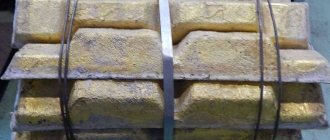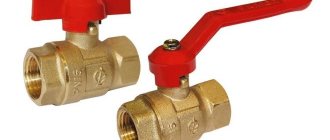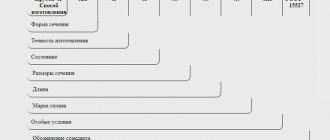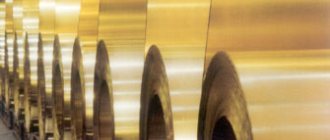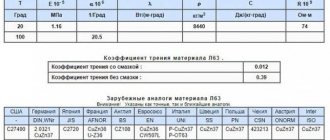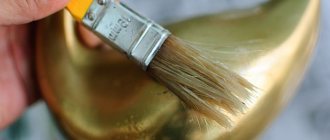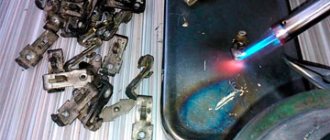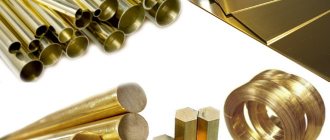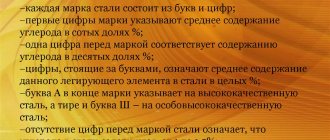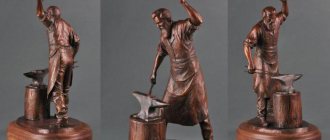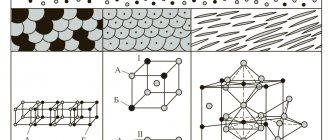Brass LO70-1 Brass LMtsA57-3-1 Brass LMtsAZhKS70-7-5-2-2-1 Brass LMtsZh57-1.5-0.75 Brass LMtsKA58-2-1-1 Brass LMtsKNS58-3-1.5-1 ,5-1 Brass LMtsKNSA58-3-1.5-1.5-1 Brass LMtsSKa58-2-2-1-1 Brass LMsh68-0.05 Brass LN65-5 Brass LNKMts49-10-0.3-0.2 Brass LNKoMts49-9-0.2-0.2 Brass LNMts60-9-5 Brass LO60-1 Brass LO62-1 Brass LKS65-1.5-3 Brass LO90-1 Brass LOK59-1-0.3 Brass LOMNA49-0 ,5-10-0.4-0.4 Brass LOMsh70-1-0.04 Brass LOMsh70-1-0.05 Brass LS58-2 Brass LS58-3 Brass LS59-1 Brass LS59-1V Brass LS59-2 Brass LS60 -1 Brass LS63-3 Brass LS64-2 Brass LS74-3 Brass LA85-0.5 Brass L59 Brass L60 Brass L63 Brass L66 Brass L68 Brass L70 Brass L72 Brass L75mk Brass L80 Brass L85 Brass L90 Brass L96 Brass LA77-2 La Tun LA77 -2u Brass LMts58-2 Brass LAZ60-1-1 (LAZH60-1-1L) Brass LAZHMtsS52-2-1-1.5-1 Brass LAMsh77-2-0.04 Brass LAMsh77-2-0.05 Brass LAN59- 3-2 Brass LANKMts 75-2-2.5-0.5-0.5 (alloy 156) Brass LAF94-0.5-0.15 Brass LZhMts59-1-1 Brass LZhS58-1-1 Brass LK62-0 .5 Brass LK75V Brass LKAN80-1-1.9-5.8 Brass LKANMTs75-2-2.5-0.5-0.5 Brass LKBO62-0.2-0.04-0.5
Standards
| Name | Code | Standards |
| Ribbons | B54 | GOST 15527-2004, GOST 2208-2007 |
| Non-ferrous metals, including rare ones, and their alloys | B51 | GOST 28873-90 |
| Rods | B55 | GOST 6688-91, GOST 2060-2006 |
| Sheets and strips | B53 | GOST 931-90 |
| Pipes made of non-ferrous metals and alloys | B64 | TU 48-0810-87-87 |
Marking
Multicomponent brasses are marked as follows: the first letter is L, meaning brass, followed by a series of letters that indicate the composition of alloying elements included in the alloy, except zinc. The numbers indicated with a hyphen indicate the following: the first number reflects the average copper content as a percentage, subsequent numbers indicate the content of each alloying element in the same sequence as in the letter part of the brand. The order of numbers and letters is established in accordance with the content of the element: the element whose share in the alloy is the largest comes first, and the remaining additives go in descending order. The zinc content is determined by the difference from 100%. For example: brand LAZHMts66−6-3−2 should be deciphered as follows: brass containing Cu - 66%, Al -6%, Fe -3% and Mn - 2%. The zinc content in brass is 100 - (66+6+3+2) = 23%. Brass that contains 5−20% Zn is called tombak (red). Yellow brass is called brass that contains 20−36% Zn. Brasses containing more than 45% Zn are extremely rarely used in practice. In brands of simple brass, only the copper content is indicated. Lb3 - contains 63% copper and -37% zinc; L96 - contains 96% copper and ~4% Zn (tompac).
Chemical composition
| Standard | P | Fe | Cu | Zn | Sn | Sb | Pb | Bi |
| GOST 2208-2007 | ≤0.01 | ≤0.1 | 61-63 | Remainder | 0.7-1.1 | ≤0.005 | ≤0.1 | ≤0.002 |
Cu is the base. According to GOST 15527-2004, GOST 2060-2006, GOST 2208-2007, the sum of other elements must be ≤ 0.30%. In brass, a mass fraction of nickel up to 0.50% is allowed due to the mass fraction of copper, which is not taken into account in the sum of other impurities.
Brass classification
By composition, brass is of the following types:
- Two-component - zinc plays the role of the key alloying element. Such alloys are marked with the letter “L” and indicating the percentage of inclusion of copper raw materials, for example, L63, L68, L80.
- Multicomponent - in addition to the main components, lead Pb, nickel Ni, aluminum Al, tin Sn, manganese Mn may be included, due to which the material acquires additional qualities and colors. The marking of such alloys contains the letters of their components and their percentage in the total volume. For example, LS63-3 means that 63% is copper, 3% is lead and 34% is zinc.
Depending on the production and processing technology, brass alloys are divided into:
- deformable (such as wire, rod, sheet, pipe, tape);
- foundry (various devices, fittings, bearings).
Mechanical characteristics
| Section, mm | σB, MPa | d10 | Brinell hardness, MPa |
| Hot-rolled sheets in delivery condition in accordance with GOST 931-90, sheets and strips in accordance with GOST 2208-2007 (samples) | |||
| — | 340-440 | ≥20 | — |
| Cold-rolled sheets and strips in delivery condition in accordance with GOST 931-90, sheets and strips in accordance with GOST 2208-2007 (samples) | |||
| — | ≥390 | ≥5 | ≥145 |
| Rods as delivered according to GOST 2060-2006 (longitudinal samples) | |||
| 10-180 | ≥360 | ≥20 | ≥80 |
| 3-50 | ≥390 | ≥15 | ≥100 |
| Pressed rods of rectangular cross-section in delivery condition according to GOST 6688-91 (longitudinal samples) | |||
| — | ≥340 | ≥25 | — |
Pressure treated brass
Multicomponent brasses processed by pressure: the main alloying components in multicomponent brasses (GOST 15527-70) are aluminum, iron, silicon, manganese, arsenic, nickel, tin and lead. Aluminum, nickel, tin and silicon increase strength, corrosion resistance and improve anti-friction characteristics. Iron, by grinding the grain, increases the recrystallization temperature and the hardness of brass. Manganese increases its heat resistance. Arsenic protects brass from dezincification in aggressive fresh waters. Additions of lead to brass improve its cutting performance.
These brasses are strengthened by strain hardening, with the exception of LANKMts75-2-2.5-0.5-0.5 brass. This brass is a dispersion-hardening alloy, which is strengthened not only by strain hardening, but also as a result of hardening and aging. It has high ductility in the hardened state and high strength and elastic properties after aging. Hardening of alloys is ensured by cold deformation after hardening.
All double brasses have sufficient strength and are excellent in hot and cold workability (with the exception of L60 brass, which is good in hot workability).
In addition to high mechanical and casting properties, L96 brass is characterized by high corrosion resistance and is not prone to dezincification and corrosion cracking. It is used for the manufacture of radiator, condenser and capillary tubes.
Brasses L90, L85, L80 have good mechanical and corrosion properties. They are used for the manufacture of coils, bellows, parts of heating and chemical equipment.
L90 brass welds well with steel when rolled together, and therefore is successfully used for cladding and bimetal production. Distinguished by its beautiful golden color, L90 brass is used for the manufacture of fittings and jewelry. Flexible hoses, parts of refrigeration equipment, and condenser tubes are made from L85 brass.
L80 brass is used for the production of wire mesh in the pulp, paper and slate industries.
L70 brass is mainly used for chemical equipment. Brass L68 is used for the manufacture of parts by cold stamping and deep drawing. Strips, sheets, tapes, rods, pipes, wire, foil and profiles of various sizes are made from brass L68 and L63. L63 brass is used for the manufacture of fasteners, automotive parts and condenser pipes. L60 brass is resistant to general corrosion and is mainly used for thick-walled pipes, washers, and machine parts.
Aluminum brasses have improved mechanical properties and corrosion resistance. They are well processed by pressure in a hot and cold state (with the exception of brass LAN59-3-2, which is processed by pressure only in a hot state). Brass LA85-0.5 is characterized by high corrosion resistance in atmospheric conditions and can be processed by drawing. It serves as a substitute for gold in the manufacture of insignia, fittings and decorations. Brass LA77-2 is resistant to impact corrosion and is used in marine shipbuilding for the manufacture of condenser pipes. Brass LAN59-3-2 is used in marine shipbuilding, in electrical machines and in chemical engineering for high-strength and chemically resistant products operating at room temperature.
Solid-drawn round pipes are made from brass LANKMts75-2-2.5-0.5-0.5 for the production of pressure tubes and springs in instruments of a high accuracy class. Brass LZhMts59-1-1, which has increased corrosion resistance in atmospheric conditions and in sea water, as well as good anti-friction properties, is used to make parts for aviation and the navy and bearing shells. Brass LN65-5 has increased mechanical and corrosion properties and is processed by pressure in hot and cold conditions. In addition to various types of rolled products, it is used to make manometric and condenser tubes in marine shipbuilding, meshes for the paper industry and other parts.
Manganese brasses, in addition to good mechanical and technological properties (processed by pressure in cold and hot conditions), have high corrosion resistance in sea water, chlorides and superheated steam. Brasses LMts58-2 and LMtsA57-3-1 are mainly used in the shipbuilding industry, as well as for the manufacture of fasteners and fittings.
Tin brasses (except brass L062-1) are well processed by pressure in hot and cold conditions, and have high corrosion resistance in fresh and sea water. Condenser tubes, heating equipment and parts for marine shipbuilding are made from brass L090-1, L070-1, L062-I, LO70-1, LOMsh70-1-0.05.
Lead brass is easy to cut and has high anti-friction properties. Brasses LS74-3, LS63-3, LS64-2 are used in the watch and automotive industries, brass LSS4-2 is also used in printing. Brasses LS60-1, LS59-1, LS59-1V are used for the manufacture of fasteners, gears, and bushings.
Silicon brass is processed by hot and cold pressure (LK80-3) and is used for corrosion-resistant machine parts.
Semi-finished products from pressure-processed brass are supplied in the form of round and flat products.
The corrosion resistance of brass L90 (weight loss) under the influence of sea water, wet steam at 100 ° C, and sea fog is respectively 0.50; 0.48; 0.24 g/(m2.day).
The endurance limit of L80 brass in the cold-drawn, annealed state is respectively 154 MPa at 100.106 cycles; 117 MPa at 90.106 cycles, and when tested in solutions of sodium chloride and carbon alkalis 96 MPa at 80 XX 10° cycles and 103 MPa at 60.106 cycles, respectively.
The endurance limit of brass L70 after deformation and annealing at 220 and 230 °C, 3 hours is equal to 92 MPa at 30.106 cycles and 96 MPa at 80.106 cycles, respectively, and in salt water it is equal to 62 MPa at 50.106 cycles and 85 MPa at 60.106 cycles, respectively.
The corrosion resistance of L63 brass under the influence of sea water is 0.61 g/(m2.day), under the influence of 10% H2SO4 - 1.46 g/(m2.day). The endurance limit in air and sea water is 168 and 113 MPa, respectively, at 50.106 cycles.
The corrosion resistance of brass LAN59-32 in g/m2 for 1000 hours is: 0.09 under the influence of alkali (soft brass); 0.04 under the influence of sea water (soft brass); 1.15 under the influence of 10% H2S04 (semi-solid brass).
The corrosion resistance of L63 brass, annealed at 650 °C and cold-rolled and annealed at 200 °C, is: 0.476 and 0.532 g/(m2.day) in sea water; 1.37 and 1.208 g/(m2-day) in a 1% solution of H2S04; 15.18 and 26.60 g/(m2.day) in 1% HWO3 solution; 0.0682 and 0.0562 g/(m2.day) in distilled water; 0.0031 and 0.0031 g/(m2.day) in the atmosphere (98% humidity), 1.46 g/(m2.day) in 10% H2S04.
The corrosion resistance of LANKMts75-2-2.5-0.5-0.5 brass, aged after quenching and after cold rolling, is: 0.0758 and 0.0693 g/(m2.day) in sea water, respectively; 0.768 and 1.174 g/(m2.day) in a 1% solution of H2S04; 7.43 and 7.60 g/(m2.day) in a 1% solution of HW03; 0.0206 and 0.0206 g/(m2.day) in distilled water; 0.00169 and 0.00113 g/(m2.day) in the atmosphere (98% humidity).
The corrosion resistance of soft brass LZhMts59-1-1 is: 0.22 g/(m2.day) under the influence of sea water; 1.77 g/(m2.day) in a 10% solution of H2S04; 0.58 g/(m2.day) in a 2% alkali solution.
The corrosion resistance of LMts58-2 brass is 0.40 g/(m2.day) in sea water; 0.70 g/(m2.day) in dry steam at 250 °C; 1.59 g/(m2.day) in a 10% solution of H2SO4 0.55 g/(m2.day) in a 2% alkali solution.
The corrosion resistance of brass L090-1 in sea water is 0.4-0.5 g/(m2.day), and that of soft brass L070-1 is 0.55 g/(m2.day); in a 10% solution of H2S04 - 1.65 g/(m2.day).
The corrosion resistance of semi-solid brass L062-1 in sea water is 0.55 g/(m2.day), and that of solid brass under the influence of a 10% H2S04 solution is 1.51 g/(m2.day).
The corrosion resistance of soft brass LS59-1 in sea water is 0.35 g/(m2.day), under the influence of a 10% solution of H2S04 - 1.42 g/(m2.day); The endurance limit of this brass in air and sea water is 190 and 100 MPa at 50.106 cycles, respectively, and the endurance limit of LZhMi59-1-1 brass in air and sea water is 140 and 80 MPa at 50.106 cycles, respectively.
L80 brass is used for the production of wire mesh in the pulp, paper and slate industries.
L70 brass is mainly used for chemical equipment. Brass L68 is used for the manufacture of parts by cold stamping and deep drawing. Strips, sheets, tapes, rods, pipes, wire, foil and profiles of various sizes are made from brass L68 and L63. L63 brass is used for the manufacture of fasteners, automotive parts and condenser pipes. L60 brass is resistant to general corrosion and is mainly used for thick-walled pipes, washers, and machine parts.
Aluminum brasses have improved mechanical properties and corrosion resistance. They are well processed by pressure in a hot and cold state (with the exception of brass LAN59-3-2, which is processed by pressure only in a hot state). Brass LA85-0.5 is characterized by high corrosion resistance in atmospheric conditions and can be processed by drawing. It serves as a substitute for gold in the manufacture of insignia, fittings and decorations. Brass LA77-2 is resistant to impact corrosion and is used in marine shipbuilding for the manufacture of condenser pipes. Brass LAN59-3-2 is used in marine shipbuilding, in electrical machines and in chemical engineering for high-strength and chemically resistant products operating at room temperature.
Solid-drawn round pipes are made from brass LANKMts75-2-2.5-0.5-0.5 for the production of pressure tubes and springs in instruments of a high accuracy class. Brass LZhMts59-1-1, which has increased corrosion resistance in atmospheric conditions and in sea water, as well as good anti-friction properties, is used to make parts for aviation and the navy and bearing shells. Brass LN65-5 has increased mechanical and corrosion properties and is processed by pressure in hot and cold conditions. In addition to various types of rolled products, it is used to make manometric and condenser tubes in marine shipbuilding, meshes for the paper industry and other parts.
Manganese brasses, in addition to good mechanical and technological properties (processed by pressure in cold and hot conditions), have high corrosion resistance in sea water, chlorides and superheated steam. Brasses LMts58-2 and LMtsA57-3-1 are mainly used in the shipbuilding industry, as well as for the manufacture of fasteners and fittings.
Tin brasses (except brass L062-1) are well processed by pressure in hot and cold conditions, and have high corrosion resistance in fresh and sea water. Condenser tubes, heating equipment and parts for marine shipbuilding are made from brass L090-1, L070-1, L062-I, LO70-1, LOMsh70-1-0.05.
Lead brass is easy to cut and has high anti-friction properties. Brasses LS74-3, LS63-3, LS64-2 are used in the watch and automotive industries, brass LSS4-2 is also used in printing. Brasses LS60-1, LS59-1, LS59-1V are used for the manufacture of fasteners, gears, and bushings.
Silicon brass is processed by hot and cold pressure (LK80-3) and is used for corrosion-resistant machine parts.
Semi-finished products from pressure-processed brass are supplied in the form of round and flat products.
The corrosion resistance of brass L90 (weight loss) under the influence of sea water, wet steam at 100 ° C, and sea fog is respectively 0.50; 0.48; 0.24 g/(m2.day).
The endurance limit of L80 brass in the cold-drawn, annealed state is respectively 154 MPa at 100.106 cycles; 117 MPa at 90.106 cycles, and when tested in solutions of sodium chloride and carbon alkalis 96 MPa at 80 XX 10° cycles and 103 MPa at 60.106 cycles, respectively.
The endurance limit of brass L70 after deformation and annealing at 220 and 230 °C, 3 hours is equal to 92 MPa at 30.106 cycles and 96 MPa at 80.106 cycles, respectively, and in salt water it is equal to 62 MPa at 50.106 cycles and 85 MPa at 60.106 cycles, respectively.
The corrosion resistance of L63 brass under the influence of sea water is 0.61 g/(m2.day), under the influence of 10% H2SO4 - 1.46 g/(m2.day). The endurance limit in air and sea water is 168 and 113 MPa, respectively, at 50.106 cycles.
The corrosion resistance of brass LAN59-32 in g/m2 for 1000 hours is: 0.09 under the influence of alkali (soft brass); 0.04 under the influence of sea water (soft brass); 1.15 under the influence of 10% H2S04 (semi-solid brass).
The corrosion resistance of L63 brass, annealed at 650 °C and cold-rolled and annealed at 200 °C, is: 0.476 and 0.532 g/(m2.day) in sea water; 1.37 and 1.208 g/(m2-day) in a 1% solution of H2S04; 15.18 and 26.60 g/(m2.day) in 1% HWO3 solution; 0.0682 and 0.0562 g/(m2.day) in distilled water; 0.0031 and 0.0031 g/(m2.day) in the atmosphere (98% humidity), 1.46 g/(m2.day) in 10% H2S04.
The corrosion resistance of LANKMts75-2-2.5-0.5-0.5 brass, aged after quenching and after cold rolling, is: 0.0758 and 0.0693 g/(m2.day) in sea water, respectively; 0.768 and 1.174 g/(m2.day) in a 1% solution of H2S04; 7.43 and 7.60 g/(m2.day) in a 1% solution of HW03; 0.0206 and 0.0206 g/(m2.day) in distilled water; 0.00169 and 0.00113 g/(m2.day) in the atmosphere (98% humidity).
The corrosion resistance of soft brass LZhMts59-1-1 is: 0.22 g/(m2.day) under the influence of sea water; 1.77 g/(m2.day) in a 10% solution of H2S04; 0.58 g/(m2.day) in a 2% alkali solution.
The corrosion resistance of LMts58-2 brass is 0.40 g/(m2.day) in sea water; 0.70 g/(m2.day) in dry steam at 250 °C; 1.59 g/(m2.day) in a 10% solution of H2SO4 0.55 g/(m2.day) in a 2% alkali solution.
The corrosion resistance of brass L090-1 in sea water is 0.4-0.5 g/(m2.day), and that of soft brass L070-1 is 0.55 g/(m2.day); in a 10% solution of H2S04 - 1.65 g/(m2.day).
The corrosion resistance of semi-solid brass L062-1 in sea water is 0.55 g/(m2.day), and that of solid brass under the influence of a 10% H2S04 solution is 1.51 g/(m2.day).
The corrosion resistance of soft brass LS59-1 in sea water is 0.35 g/(m2.day), under the influence of a 10% solution of H2S04 - 1.42 g/(m2.day); The endurance limit of this brass in air and sea water is 190 and 100 MPa at 50.106 cycles, respectively, and the endurance limit of LZhMi59-1-1 brass in air and sea water is 140 and 80 MPa at 50.106 cycles, respectively.
Advantages
Nickel silver: alloy composition, application, characteristics
Like many other types of rolled metal, bronze rod has a number of advantages:
- No rough surface. This effect is achieved by long-term processing of products on the machine. Thus, any relief on the profile almost completely disappears.
- High level of strength. This in turn affects the service life of the rods. They withstand both kinks and various moderate stretches well.
- Low wear. For many other types of rolled metal it is more significant.
- Affordable price of rolled metal. This can be achieved through well-functioning, reliable production and the use of the latest technologies.
- Optimal level of heat and electrical conductivity. These properties of the product can be modified by adding some other substances to it, such as nickel, copper, iron, etc. In this way, both low and high electrical conductivity can be achieved.
- Versatility. A large number of types of rods allows them to be used in completely different areas.
- Increased flexibility and ductility. As a result, bronze rods are often used in the production of various parts and devices of both simple and complex shapes.
- Resistance to climatic conditions. This significantly increases the service life of the product and its functionality.
Provider
Are you interested in brass markings? The marking of brass on the website of the supplier "Auremo" is covered most fully. We offer to buy rolled brass from specialized warehouses of the supplier “Auremo” with delivery to any city. Full compliance with GOST and international quality standards. For wholesale customers the price is preferential. Buy today.
Buy, favorable price
The warehouse of the supplier "Auremo" offers the widest selection of products. Rolled brass is always available, the price is determined by the technological features of production without including additional costs. This is the optimal price from the supplier. Buy today. We are waiting for your orders. We have the best price-quality ratio for the entire range of products. Experienced managers are in touch and will quickly help you buy rolled brass wholesale or in installments. Regular customers can buy rolled brass at a discount; the price is the best in this rental segment. The supplier Auremo is a recognized expert in the non-ferrous metals market. Thanks to representative offices in Eastern Europe, we have the opportunity to quickly interact with trading partners.
Machinability
Characteristics and composition of wood alloy
The machinability of brasses by cutting depends on their phase composition. When cutting single-phase α-brasses, the chips turn out to be long, wind up on the cutter, and the quality of the machined surface deteriorates. Two-phase α+β-brasses have better machinability than single-phase brasses. Increasing the β'-phase content in the structure makes the brass chips more brittle and finer, and the surface quality of the workpiece is improved. A quantitative assessment of the machinability of brass is determined by comparison with brass LS63-3, the machinability of which is taken as 100%. So, for example, the machinability of single-phase α-brass L90 is 20%, two-phase L63 is 40%, compared to brass LS63-3.
Application
Due to its low cost, high hardness, good machine machinability, anti-friction properties and corrosion resistance, LS59-1 is widely used in all types of production. Various workpieces are mass produced from this alloy. Gears, bushings, cogwheels, forgings, fasteners, and pipes are made from it. The mass nature of such production ensures good machinability on machines.
In addition to the fact that parts on machines are made from LS59-1, structural elements of the machines themselves are also made from it, in particular guides for the movement of machine carriages. Such guides do not deform or wear out over time. Moreover, the cost of such products is low.
Mechanical properties of alloy LS59-1
The phase state of the alloy has a small amount of substance in the b-phase, and lead is a separate phase in it, so it can be easily processed by pressure and cutting. However, the ductility of LS59-1 is significantly inferior to two-component alloys and is recommended for cutting. It produces:
- brass rods,
- brass circles,
- tapes, strips and sheets of brass,
- profiles,
- brass plates,
- brass wire,
- brass pipes.
This alloy has anti-friction properties and can be used in the manufacture of small parts designed to operate under high friction, for example, plain bearings. Since it has a higher hardness than simple alloys and is resistant to abrasion, sheet blanks from it can be used for the manufacture of guide elements of various machine tools. You can buy LS59-1 brass in the appropriate section here.
The problem with all multicomponent brasses is excessive fragility, which manifests itself under special conditions due to the multiphase structure of the material. In the material we are considering, lead forms a separate phase, which has a positive effect on the machinability of parts made from it on machines, but also makes the material more fragile. Parts made of LS59-1 with notches tend to break under high pressure, so they cannot be used as load-bearing elements. And with a high impact load on L63 workpieces, the material may become cracked due to its low impact toughness, so it is not suitable for forging.
Dezincification of brass
Characteristics of dore alloy
Brass, in addition to general corrosion, is also subject to special types of corrosion: dezincification and “seasonal” cracking. Dezincification is a special form of corrosion in which the surface of the brass product is first dissolved in a reagent. The solution in which brass is dezincified contains more zinc than copper. As a result of exchange reactions in the cathode sections, copper is electrochemically deposited in the form of a spongy film. Brasses with a high zinc content (L60, L63) undergo dezincification faster, since in two-phase brasses there is a preferential dissolution of the β-phase, which is the anode, and the α-phase, the cathode. The dezincification process is observed when brass comes into contact with electrically conductive media (acidic and alkaline solutions). As a result, brass becomes porous, reddish spots appear on the surface, and mechanical properties deteriorate.
Corrosion resistance of material LS59-1
After processing workpieces made of brass LS59-1 , the material does not experience strong stress, lead forms a separate phase, for this reason, it is more resistant to seasonal cracking, which manifests itself with increasing humidity and ambient temperature, in which it is superior to L68 and L63.
In general, our multi-component alloy is resistant to corrosion, under the same conditions as most brasses. It should not be used in contact with Fe, Al, Zn. He also shows himself poorly:
- in air saturated with moist vapors, at high pressure,
- in contact with fatty acids,
- in hydrogen sulfide,
- mine waters,
- mineral acids,
- as well as in oxidized solutions,
- and with chlorides.
Resistance to corrosion is manifested by:
- in air and maritime climates,
- in dry vapors,
- fresh waters,
- freons, alcohols, antifreezes,
- salty sea water in a sedentary state.
And the presence of excess oxygen, ammonia or carbon dioxide in vapor or water negatively affects the corrosion resistance of this material.
